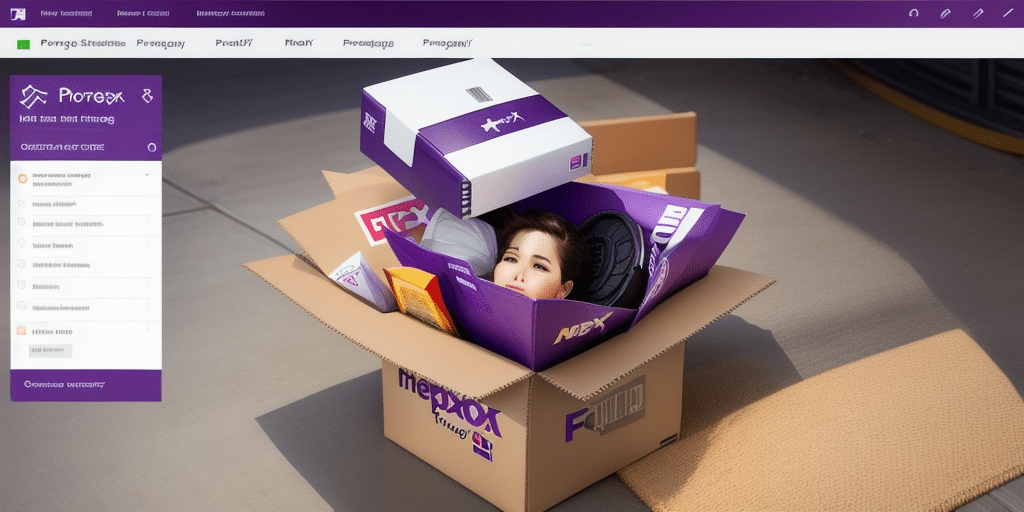Introduction to Parallels Proxy Server and Its Features
As businesses continue to rely more heavily on e-commerce, the global e-commerce market is projected to reach $6.4 trillion by 2024 (Statista), driving the need for efficient and reliable shipping solutions. Parallels Proxy Server offers a robust solution designed specifically for Mac OS X, acting as an intermediary between your computer and the internet to enhance security and control.
In this comprehensive guide, we will explore how to set up and utilize Parallels Proxy Server for seamless internet connectivity and integrate it with FedEx Ship Manager to streamline your shipping management processes.
Key Features of Parallels Proxy Server
- Remote Access: Access your virtual machines from any location worldwide by logging into your Parallels account.
- Port Forwarding: Redirect incoming traffic from one port to another, ensuring efficient traffic management and application accessibility.
- Load Balancing: Distribute workloads evenly across multiple machines to optimize performance and prevent server overloads.
- Advanced Security: Equipped with a built-in firewall and SSL encryption, Parallels Proxy Server safeguards your virtual machines and data from unauthorized access and cyber threats.
These features make Parallels Proxy Server an indispensable tool for businesses that operate across various software and operating systems, providing a secure and flexible environment to manage their operations effectively.
Setting Up Parallels Proxy Server for Internet Connection
- Download and Install: Obtain Parallels Proxy Server from the official Parallels website and follow the installation wizard to install the software on your Mac.
- Create a Virtual Machine: Launch Parallels and create a new virtual machine by selecting your desired operating system from the available options.
- Configure Network Settings:
- Go to Parallels settings and select "Network."
- Choose the type of network connection that best suits your needs (e.g., Shared, Bridged, Host-Only).
- If necessary, input additional network details such as IP addresses, subnet masks, and gateways to match your network infrastructure.
- Launch the Virtual Machine: Save your settings and start the virtual machine to establish an internet connection through Parallels Proxy Server.
Be aware that introducing an additional software layer with Parallels Proxy Server might slightly reduce your internet speed. However, optimizing your virtual machine's performance settings and your network configuration can help mitigate this impact.
For further assistance, consult the detailed Parallels support documentation or reach out to their customer support team for expert guidance.
Installing FedEx Ship Manager on Parallels Proxy Server
With Parallels Proxy Server configured, you can now install FedEx Ship Manager, a comprehensive shipping solution that integrates seamlessly into your business operations.
- Download the Software: Visit the FedEx official website and download the FedEx Ship Manager application.
- Run the Installer: Execute the installation file and follow the on-screen instructions, selecting configurations that align with your business requirements.
- Register Your FedEx Account: Complete the FedEx account registration process, ensuring that your account is properly linked to the FedEx Ship Manager network.
- Verify System Requirements: Ensure that your Parallels Proxy Server meets or exceeds the minimum system requirements specified by FedEx to prevent potential performance issues.
Maintaining FedEx Ship Manager up to date is crucial. Utilize the software's automatic update feature or manually check the FedEx website for the latest updates to benefit from security enhancements and new features.
Configuring FedEx Ship Manager on Parallels Proxy Server
After successfully installing FedEx Ship Manager, configure it to function optimally with your Parallels Proxy Server setup:
- Set Up Port Forwarding: In the Parallels settings, navigate to "Port Forwarding" and specify the necessary ports for FedEx Ship Manager. Common ports include SMTP (25), HTTP (80), and HTTPS (443).
- Initialize FedEx Ship Manager: Open FedEx Ship Manager and proceed through the initial setup prompts to input your shipping preferences and account details.
- Test Connectivity: Conduct tests to ensure that FedEx Ship Manager communicates effectively with the internet through Parallels Proxy Server. Confirm that shipping labels can be created and printed without issues.
Should you encounter any configuration problems, the FedEx technical support team is available to assist you in troubleshooting and resolving issues.
Regularly updating both FedEx Ship Manager and Parallels Proxy Server is recommended to maintain compatibility and access the latest features and security updates.
Troubleshooting Common Issues
Despite their robustness, Parallels Proxy Server and FedEx Ship Manager might present occasional issues. Common challenges include:
- Reduced Internet Speeds: The additional proxy layer can slow down internet connection speeds. Adjusting virtual machine settings and optimizing network configurations can help improve performance.
- Port Conflicts: Ensure that the ports required by FedEx Ship Manager are not being used by other applications. If conflicts arise, reassign ports in the Parallels settings.
- Account Linking Issues: Double-check your FedEx account details and ensure that all registration steps have been correctly followed to maintain a stable connection between FedEx Ship Manager and your account.
- Printing Errors: If shipping labels fail to print, verify that your printer drivers are up to date and that the printer settings within FedEx Ship Manager are correctly configured.
- Software Crashes: Persistent software crashes may require restarting your system, ensuring all updates are installed, or reinstalling the affected software.
For detailed troubleshooting steps, refer to the support resources provided by Parallels and FedEx.
Benefits of Using Parallels Proxy Server with FedEx Ship Manager
Combining Parallels Proxy Server with FedEx Ship Manager offers a host of benefits for businesses, including:
- Enhanced Security: Advanced security features, such as customizable firewalls and SSL encryption, protect sensitive business data and prevent unauthorized access.
- Streamlined Shipping Operations: Automates and simplifies shipping tasks, reducing manual errors and increasing operational efficiency.
- Cross-Platform Compatibility: Enables businesses that utilize different operating systems and software to work seamlessly together without the need for additional hardware.
- Optimized Internet Performance: Caches frequently accessed websites and files, decreasing load times and improving productivity for internet-dependent applications.
- Comprehensive Reporting and Monitoring: Tracks internet usage and identifies potential security threats or bandwidth issues, allowing for informed decision-making and proactive management.
These advantages contribute to a more secure, efficient, and competitive business operation in the fast-paced e-commerce environment.
Comparing Parallels Proxy Server with Other Proxy Options
When exploring proxy server solutions, it's essential to consider how Parallels Proxy Server stacks up against other available options:
- Seamless Mac OS X Integration: Unlike many proxy servers, Parallels Proxy Server is tailored for Mac OS X, ensuring optimal performance and resource utilization.
- Comprehensive Feature Set: Offers essential business features such as remote access, port forwarding, load balancing, and robust security measures, making it a versatile choice for various business needs.
- High Traffic Handling Capabilities: Designed to manage large volumes of traffic without sacrificing speed or reliability, ensuring consistent performance even during peak usage times.
- User-Friendly Interface: Intuitive setup and configuration processes make Parallels Proxy Server accessible to users with varying levels of technical expertise.
These factors make Parallels Proxy Server a compelling choice for businesses seeking a reliable and efficient proxy solution, particularly those operating within the Mac ecosystem.
Tips for Maximizing Efficiency with Parallels Proxy Server and FedEx Ship Manager
To fully leverage the capabilities of Parallels Proxy Server and FedEx Ship Manager, consider the following best practices:
- Leverage Remote Access: Utilize the remote access feature to manage your virtual machines from any location, enhancing flexibility for remote work scenarios.
- Regularly Test Configurations: Periodically verify that your network settings and software configurations are correctly set up to prevent unexpected downtime and maintain operational continuity.
- Maintain Up-to-Date Software: Ensuring that both Parallels Proxy Server and FedEx Ship Manager are updated with the latest versions to benefit from performance improvements and security patches.
- Implement Automation Tools: Use automation features within FedEx Ship Manager to handle repetitive shipping tasks, reducing manual labor and minimizing errors.
- Monitor System Performance: Regularly review system reports and monitoring tools provided by Parallels Proxy Server to detect and address potential issues proactively.
Adhering to these strategies can significantly enhance the efficiency and effectiveness of your business operations, maximizing the return on investment in these software solutions.
Conclusion: Streamline Your Internet Connection and Shipping Management
Integrating Parallels Proxy Server with FedEx Ship Manager presents a powerful combination for businesses seeking to enhance their internet connectivity and shipping management processes. The advanced security features, cross-platform compatibility, and comprehensive shipping tools facilitate a secure and efficient operational environment.
By meticulously setting up these tools and adhering to best practices, businesses can achieve greater control over their internet usage and shipping operations, ultimately leading to improved productivity and competitive advantage in the thriving e-commerce landscape.
Stay ahead by continually updating your technological tools and refining your operational strategies to meet the dynamic demands of the market and deliver superior customer service.






















